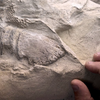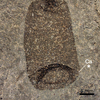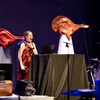Listening In On Aliens

It's time to get far out — NASA has recently approved funding for its new program CATS, or Categorizing Atmospheric Technosignatures, which may aid in identifying technologically advanced civilizations on alien worlds.
The previous ethos in searching for such civilizations had been to look for deliberate messages sent towards Earth, like a universal mathematical constant (Pi, the Fibonacci sequence) broadcast at hydrogen’s electromagnetic frequency. But now the gears have shifted to look for spillover frequencies — just as our presence on Earth produces massive amounts of electromagnetic signs and disruptions to our atmosphere, other advanced civilizations would produce something similar.
The idea of a spillover frequency is not new. In fact, science fiction authors have been aware of the concept for sometime. There's plenty of novels and movies where broadcasts from Earth accidentally make their way to alien worlds without us knowing it. This would be a reverse of that scenario though; instead of aliens stumbling across our radio waves, we're looking for theirs.
This project will make use of the recently launched James Webb Space Telescope, examining distant exoplanets for telltale signs of alien life. Much of the focus will be on industrial byproducts like chlorofluorocarbons and nitrogen dioxide, both of which would indicate intelligent life and could be identified by the JWST’s sensors. There’s also the technological footprint to consider--just as we have left our mark on the solar system with innumerable rovers, satellites, and space junk, a comparably advanced civilization will have also made its mark across its celestial neighborhood.
Of course, the CATS program is no guarantee of finding extraterrestrial life. There is a lot of noise out there to parse through but it’s still providing a better understanding of both the universe out there, and is a reminder of the effect we’re having on our own planet too.
Featured Product
Joe Frazier Boxing Glove
Cool Things!

Is “Paul is Dead” Dead?: Unpacking One Of Pop Culture’s Most Enduring Conspiracy Theories

Scientists Discover Hooves and Skin in Preserved Dinosaur "Mummies!"
A dinosaur discovery just in time for Halloween! In a new analysis of a group of fossils from Wyoming, Scientists have determined this group of fossils are dinosaur “mummies,” with preserved skin and even hooves.

Scientists Record a Bat Catching Birds Mid-Flight!
Bats, birds, screeches, oh my! In a reverse-Hitchcock twist, a new study reveals that a species of European bat catches and eats birds mid-flight.
Specimen Deep Dives

The House that Ruth Built: The Story of the Old Yankee Stadium

The Queen of the Skies: the Story of the Boeing 747

Old Ironsides: The USS Constitution and the Start of the U.S. Navy
Long Form Articles

The Artist Behind the Macintosh: Susan Kare and Apple Computers
While the two Steves, Jobs and Wozniak, are the most well known faces behind Apple computers, equally important to the products and culture of the company were those who crafted the experience of using their computers through design. The most notable of these visual architects was Susan Kare, a designer responsible for “humanizing” Macintosh computers.

Can I Lick It? Yes You Can!
Have you ever been unable to tell if a fossil was really a fossil, but you were too embarrassed to admit it? Have you ever wanted to lick a fossil just because, but you didn’t want to risk judgment from your peers? Well, good news! You can kill two birds with one stone! Licking a fossil can actually help you determine if it’s the real deal or just another rock.

Is It Legal To Own a Meteorite: How to Start Your Outer Space Collection!
Meteorites are some of the rarest geological specimens to be found on Earth. Of course, since these stones are not of our world, purchasing them can sometimes be a confusing process. Is it legal to own a meteorite? In short, yes! Read on for help starting your cosmic collection!


















